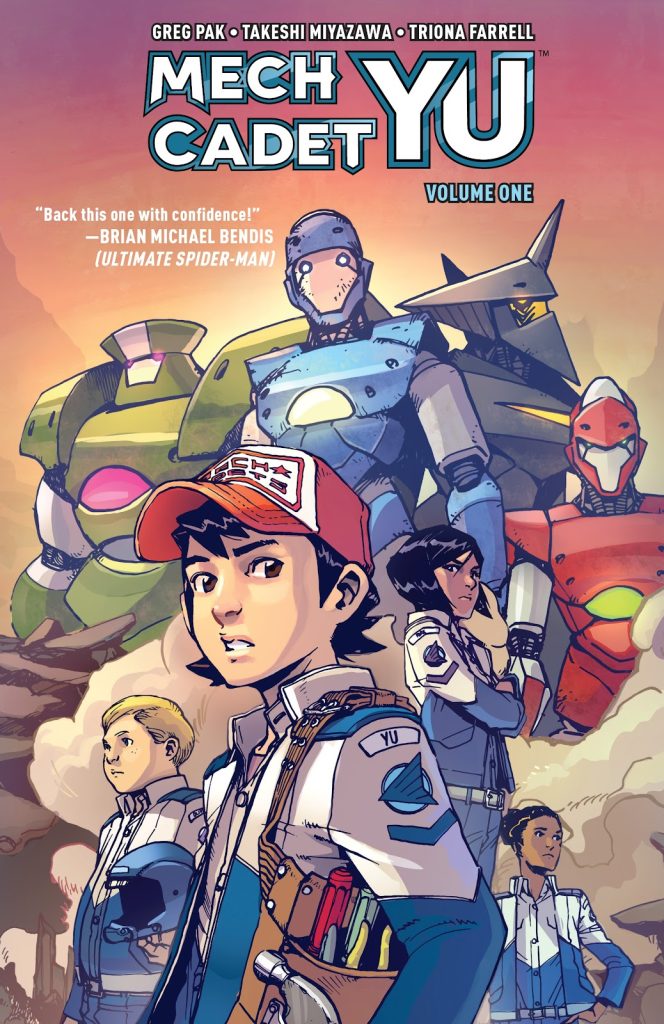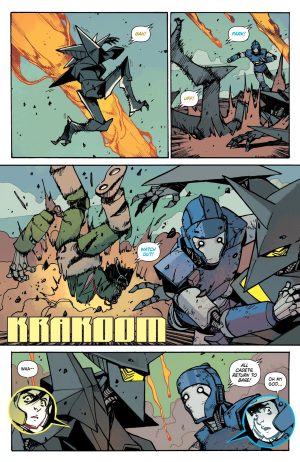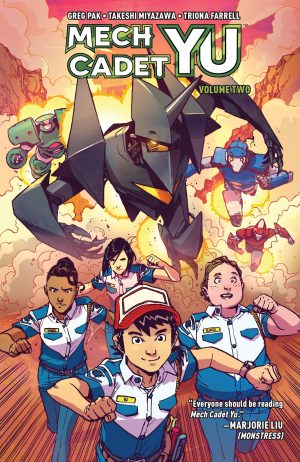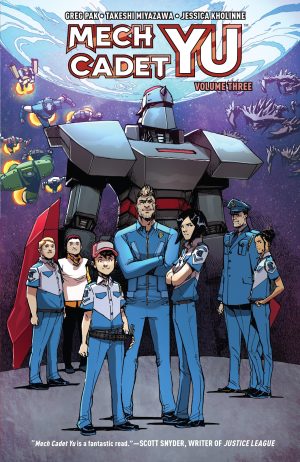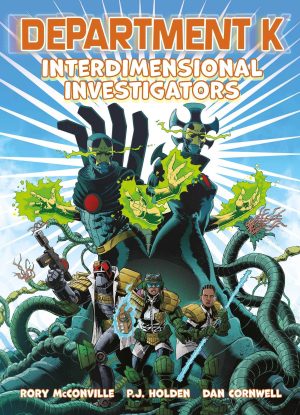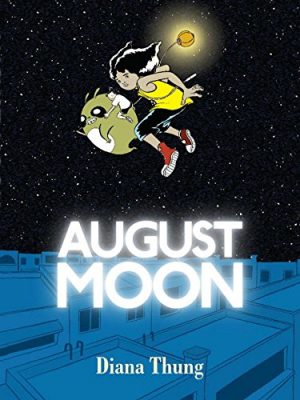Review by Ian Keogh
Stanford Yu assists his mother cleaning at a training base for cadets intended to bond with giant robots who’ll protect the Earth from a predatory race known as the Sharg. They were repelled decades ago when a young lad named Skip Tanaka bonded with a Mech, and he’s now an inspirational figure, but the Sharg remain a threat. When the current batch of Mechs arrive, one flies off course and is met by Stanford on his way home, and instead of bonding with a trained cadet, the Mech selects Stanford, prompting jealousy from the trainee selected to bond with a Mech. Inconveniently, Park is also the daughter of the General running the cadet training.
It must have been pleasing for Greg Pak and Takeshi Miyazawa that a short story produced in 2011 became a series in 2018. There’s no great originality in mixing an outsider overcoming the odds with giant robots but in Mech Cadet Yu it sure is fun. Stanford is likeable from the start, enthusiastic, diligent and a natural when it comes to engineering, a talent that proves its worth on several occasions over this opening volume.
Miyazawa takes a different approach to the Mechs from that customary for giant robots. They’re usually seen as hard edged, but he uses the softer lines associated with his pages elsewhere, which creates a sympathetic piecemeal look. The Mech partnered by Stanford is also designed with a more human face for extra appeal. There’s a variety to the cast, who don’t all have the same body shape, and it’s no hindrance that Miyazawa’s preference is for action scenes worked out over small panels with pin-up pages rare.
Pak leaves plenty of questions unanswered, most prominently just who’s manufacturing giant battlesuits and sending them to Earth, but this is Volume One after all, and we don’t want everything rolled out at once. The Sharg inevitably do land on Earth again, and just as inevitably Stanford is caught in the wrong space at the wrong time, but it’s the touches around that ensuring the series has a USP. Skip Tanaka is a good character, understanding and able to use the respect he has to bend the rules slightly, and Stanford’s mother has an ongoing role, nicely written as caring and wanting the best for her son. The understated way their bond is strong enough to survive her sometimes embarrassing interventions is nicely developed. For the time being it’s only Park among Stanford’s fellow students who’s really given a personality, and the positive way Standford interacts with her seemingly malevolent character is a delight.
This is a very promising start, with more to follow in Volume Two.
